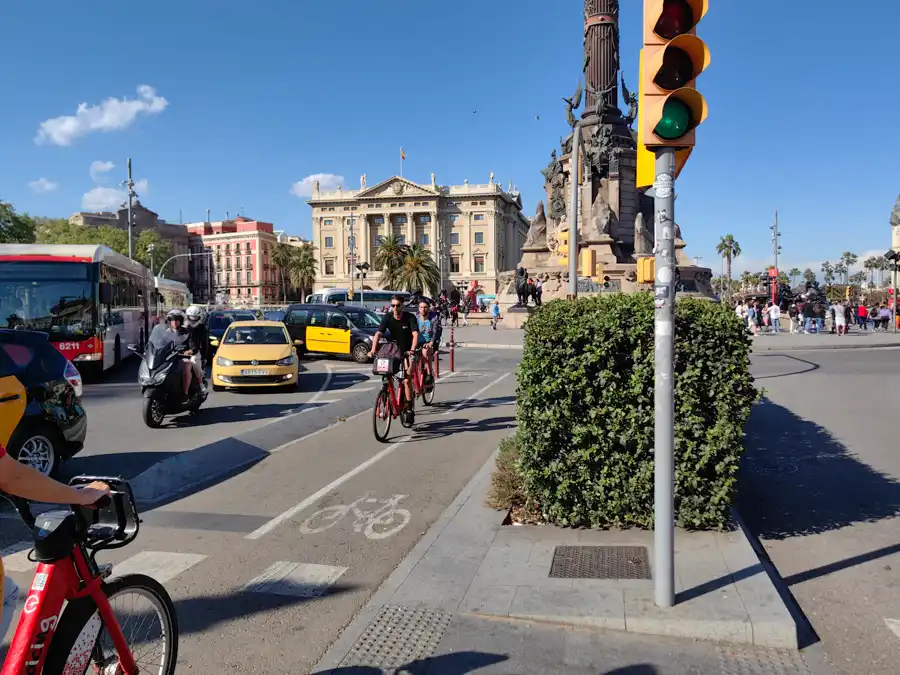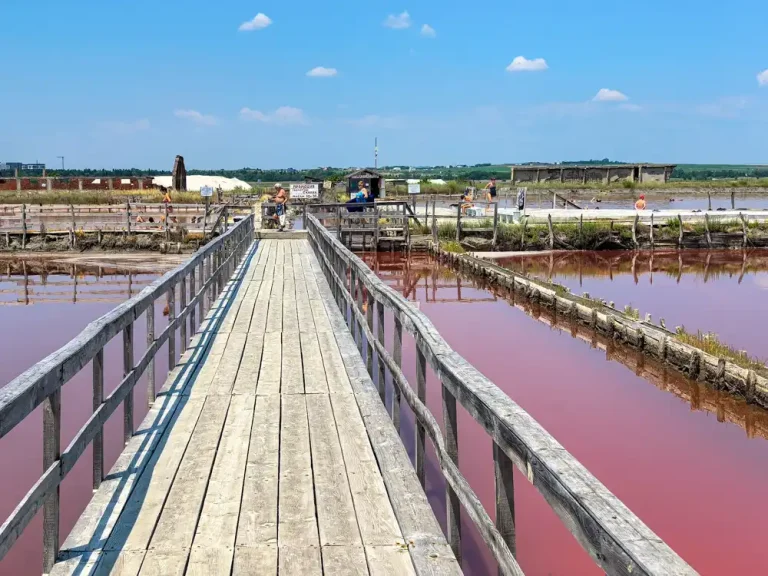Getting around in Barcelona means making efficient use of integrated public transport. But transport in Barcelona, and the metro in particular, has its pitfalls compared to Bratislava.
Prologue
Hey neighbour, where have you been? I haven’t seen you in a while.
A couple of days in Barcelona.
How was it?
Great, great.
And why didn’t you stay there if it was so great?
Transport in Barcelona
The backbone of transport in Barcelona is the metro, often interlinked with regional trains, buses and cable cars. Transport is provided by multiple companies and if you don’t want to experience complications, buy Hola Barcelona day passes. They sell 1 to 5 day passes and they really pay off. With them, you have unlimited public transport travel in Barcelona for 2 days (48 hrs) to 5 days (120 hrs) consecutively from the first hiccup.

The ticket is valid for one person on the metro and bus (TMB), rail (FGC, zone 1), Montjuïc and Vallvidrera cable cars, tram (TRAM) and suburban trains in zone 1 of Rodalies de Catalunya.

Barcelona Metro
Barcelona’s metro is not just any metro, it has its flaws too. If you want to use the metro in Barcelona from and to the airport, you need to buy an extra ticket for 5.10 euros one way. This is because it passes through several zones. You wouldn’t be able to do that in Bratislava. You don’t need any extra ticket in Bratislava for the metro.
Tip. However, there is a special bus from Barcelona Airport, the 46, for which all-day tickets are valid and which will take you comfortably to the centre and to the stops, from where you can change buses anywhere without any problems.
Barcelona’s metro has plenty of spice. To go along with today’s Slovak trends (bad EU) I will try to be highly critical. Right after first entering the metro, it was almost 2 minutes late against the timer. Malfunction. That can’t happen to you in Bratislava. I don’t remember a malfunction on the metro in Bratislava.

Comparison of the Bratislava and Barcelona Metro
The first time you look at the metro map, you have to shout: “Who the fuck is supposed to know their way around this mess?” Barcelona’s metro has 12 lines, connecting trains and cable cars and 186 stations. The lines cross at various points. Some of them several times. When you enter the metro, there is a clear map and a ticket machine everywhere, but still: “Prague has three lines, Rome has five, and those Catalans don’t have enough for twelve?”
On the first day, we experience pure chaos while looking for a transfer station. Such a thing could not happen in Bratislava. Here, everything is clear and transparent. You have no problem deciding where to get on and off the metro. And yet we only need 12 lines and 186 stations less. We are more economical.
Compared to Barcelona, Slovakia also gives us a sense of youth. During our 5 days in Barcelona, we had several occasions when someone got up and made room for us. “Are we that old?” Janko, who is almost 70, says half-mouthed, and mostly politely refuses the seats. In Bratislava we don’t have this feeling of old age. Here, everyone is fighting for their positions, and your fellow passengers are happy to give you the feeling of youth.
There is still a lot to compare. The trains run shamelessly often. You don’t even have time to get your bearings at the station. Also, many Barcelona stations don’t have escalators on the shorter ascents, only handicap lifts. In Bratislava, again compared to Barcelona, we thought of everything. A friend of mine at the Transport Construction Project Institute showed me back in 1986 how we had everything meticulously planned. And indeed. To this day, there is not a single metro station in Bratislava without escalators or a barrier-free access.
But enough about the metro.
Barcelona by car
One of the main reasons to use a car in Barcelona are the beaches and the mountains. Especially those around the Montserrat Monastery. Yes, there are trains but the transfers and downtime put most people off trips. After not having the best experience communicating with car rental companies in the city directly, we decided to use the online search engine Discover Cars instead, which searched over a hundred rental companies and offered us a great Fiat Panda 🙂 for a week for 144 euros. Deal for us.

Some useful tips
- The Barcelona Metro and transport in Barcelona are integrated. You use the metro, buses, trams, cable cars and commuter trains. However, the metro is the most convenient and fastest mode of transport.
- Hola Barcelona day tickets are much more convenient, they are valid everywhere and don’t cost much. If you buy your tickets online you get a 10% discount. You get a code that you enter in any machine and it prints the ticket for you.
- Express bus line 46 goes to and from the airport. The Hola Barcelona ticket is valid for you.
- Metro entrances are prominently marked from a distance with a red M. There are ticket machines in every metro station. You always need to insert your ticket to go through the turnstile.
- If you’re in the centre, you’ll make the most of lines L1 to L5, which form the backbone of the metro around the centre and sights.
- To get to the top of Montjuïc get off at Paral-Lel station and change to the funicular to Parc de Montjuic. If you want to go to the top of the hill and not pay the extra cable car fare, wait for the 150 bus. It goes from Espanya Square via the top cable car station all the way up to the fortress.
- If you want to get to Tibidaba with a day ticket at no extra charge, take the regional train S1, S2 from Plaza Catalunya to Peu de Funicular station, where you change to the Vallvidrera tubing train (runs every 15 minutes). From the top of the tubing station, minibus 111 goes up to the top of Tibidaba.
Epilogue
Why did I feel great in Barcelona? The transport also tells us a lot. It works and it lives. But the biggest difference I feel is not so much in the technology or the historical sites but in the people. In Barcelona, the metro was smiling. You see a lot more smiling people here than here. At the station, we asked the SBS-doctor about the train. Unexpected. He smiled and led us straight to the train. Most people here were friendly, helpful, accommodating, tolerant and considerate.
The whole city feels cosmopolitan and multicultural. There is a mix of peoples, cultures and customs. It is a pleasure to get to know those cultures, for example through the food. 🙂



Hola Slovakia
When we talked to our host about Slovakia, he showed great interest in coming to visit us one day. He likes travelling and exploring and he hasn’t been to Slovakia yet. He listened with interest to how beautiful our mountains, gorges, cycle paths and not only the Tatra Mountains are. Also how the evening life works in the cities. And not only in Bratislava. He was interested in our talks about Poloniny and Krupina Highlands.
He had a bulletin board above his desk. Greetings from guests from Italy, Turkey, Poland, France, USA and Colombia. He is a super host. He tries his best to meet everyone’s needs. Than people keep coming back, leave good references and he’s always full.
Communication with Slovak hosts is different at times. Last time we had a guesthouse owner crying to us about how nothing could be done. He was pissed all the time, swearing at tourists, at the EU, at Bratislava’s patissiers (we are from Bratislava too), at the government, at everything. Curiously his accommodation in the middle of Slovakia was more expensive than the one in Barcelona. We don’t want foreigners and we won’t have our own. In the end he tried to charge us two extra dinners.
We have a beautiful country. But instead of joining forces, improving the region, cooperation and developing tourism, we prefer to heckle, cry and swear. We still have a long way to go. In the last year, I seem to have lost my understanding of the country in which I live.

Yes, it was great in Barcelona. The sights, the history, the paella, the wine, the sea, the hiking,… But most of all, I felt good there. Comfortable and free. But sometimes it’s better not to talk about it at home. 🙂





